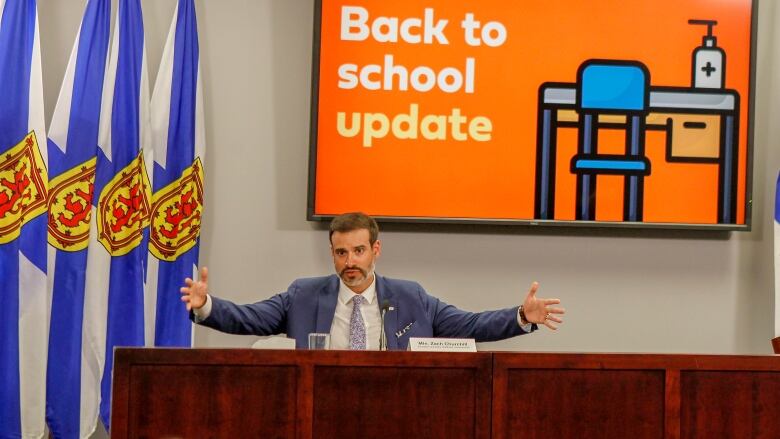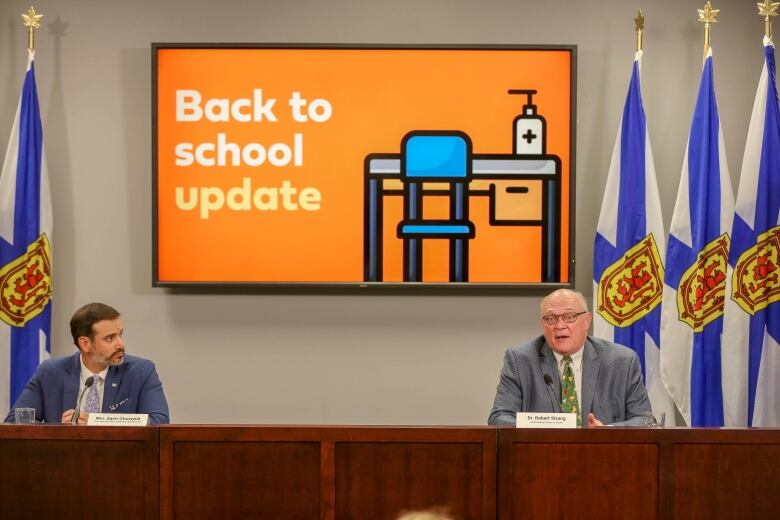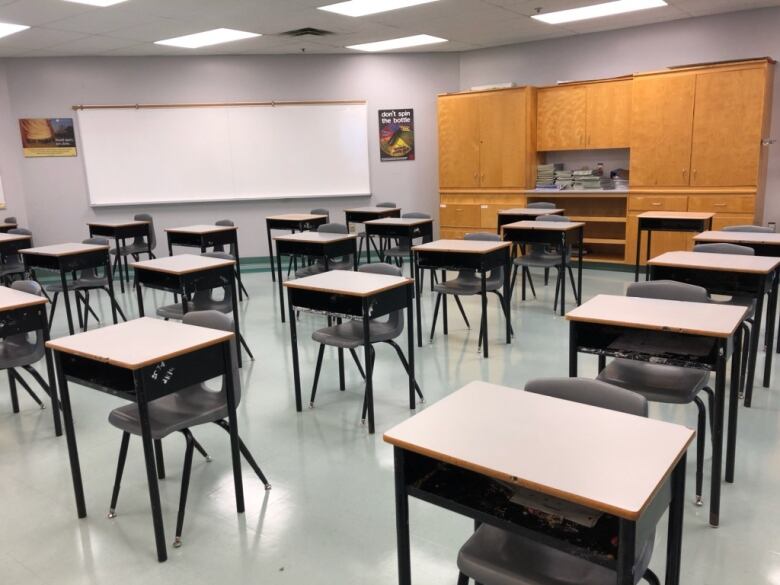NSTU wants opening of schools delayed, but education minister says they're ready
Education minister and chief public health officer answer back-to-school questions

The head of the Nova Scotia Teacher's Union says schools won't be safe for students and staff byTuesday and he wants the first day pushed back,while the province's education minister calls hiscomments"obviously not true."
Paul Wozney told CBC's Mainstreeton Wednesday that staff want to use a couple professional development days next week, so they have more time to ensure their classrooms are ready to go. He said job action isn't being formally discussed right now, but it could be.
"Teachers are going to have to huddle up with their union reps and decide," he said. "What else can we do? We've played ball with the government that has never respected us, never listened to us.
"This plan is a disaster waiting to happen."
Education Minister Zach Churchill said he"can't accept the premise of those comments" and that his department has been working closely with the union leading up to September. He saidschools are on track to safely open on Tuesday.
"When hyperbole is used that obviously does not help get out kids ready to be back to school and does not help with their mental health or anxiety levels," Churchillsaid.
The minister, along with Dr. Robert Strang, joined the host of CBC's Information Morning Portia Clark on Thursday to respond to the union's concerns andanswer back-to-school questions.
Their conversation has been edited for clarity and length.
Why is Nova Scotia not taking the extra almost $50 million the federal government has provided to rent out spaces, like commercial spaces or hockey arenas or convention centres, where it's needed?
Zach Churchill: We've talked about the idea of renting commercial space and the fact is that it's not where the supports are for students, whether it's the breakfast program, lunch program, specialists, mental health clinicians, their teachers, their friends, the playground. It's not an ideal learning environment.And secondly, it's not safer to move students out of buildings that we have control over, where we control the access points, where we know what the water testing is, where our protocols, we know, are firmly in place. To move them to other buildings where there could potentially be other people under control of other organizations, it brings in more variables that could be problematic from a safety perspective.
Would schools that have empty classrooms be used, though?
Churchill: I mean, I'm not aware of that school. Our space is being maximized right now. Our operational staff have been in our schools for, you know, throughout the summer, getting prepared for this week. We've got principals and vice-principals back for close to two weeks now and all precautions are being taken."
How can two metres be the necessary requirement for distance in all public spaces, but not in schools?
Dr. Robert Strang:This is about two things. It's about finding a balance, as well as not focusing on any one specific preventive measure. We know that we need to create an environment where kids are able to be in school. There are significant challenges that children and families have faced of not being in school in the last six months. So we can't just dismiss that.
We've got a layered approach and there's multiple preventive measures that all work in a complementary fashion, and physical distancing is just one part of those. Yes, that's important, but with all the measures we have in classrooms, we're very comfortable ... If COVID-19 increases, the very first thing we do is consider moving to a blended learning model, which then places a much stronger emphasis on stricter adherence to that two-meter distance.

With the possibility that some of these measures could break down, is it arisk not worth taking?
Strang: The likelihood of COVID-19 in a school depends on the likelihood of COVID in a community. Right now, we have a very low risk of COVID in the community, and therefore there's a very low risk of COVID being brought into the school.
If that changes, we strengthen the preventive measures. So one of the key things we want everybody to focus on is how do we actually, all of us, practise the preventive measures to keep our communities safe, which then keeps our schools safe. I think people are forgetting the substantive harms of not having children in school, and so this is about finding the appropriate balance.
How confident are you that prolonged mask wearing won't cause health or psychological problems for grades 4-12 students?
Strang: I don't think that's been studied directly for that age group, but there are certainly occupations, many people in the health-care system wear masks on an ongoing basis as part of their job.
But these are kids.
Strang: Absolutely, but also we know that kids are very resilient. Kids will understand that wearing masks, along with other measures, helps keep them and each other safe.
It's all how we approach this. We have to help kids learn how to use masks safely and take them on and off safely, but also build their confidence that the masks are contributing to their collective safety.

What are the results of the ventilation inspections your department did? Where does implementation stand after what you found?
Churchill: It's important that people know that we have a legal obligation to check those systems every year. So there's ongoing maintenance and checking that has always happened. There was a bit more emphasis on getting that done earlier this year because of the connection to the ventilation and COVID. As recently as this morning, our operational folks have confirmed that all maintenance checks have been completed and any maintenance work will be completed before Tuesday.
There are times that teachers and teaching assistants need to help a student who's not able to do something on their own. How does physical distancing happen in those instances?
Strang: In those instances clearly people can't maintain physical distancing, but we have everybody wearing masks. And certainly teachers have the option if they choose to then to supplement the mask by also wearing a face shield or some other form of eye protection as an additional safety measure when they have to do that close interaction.

Churchill: We're also the only province that's providing the personal protective equipment to our staff and to our students. So we have purchased masks for everybody, but we've also purchased face shields and gloves and eye protection for the staff that are working more closely with students or who may have, you know, a health condition that they're concerned about.
If someone in school tests positive would that trigger public health to close down a whole school, and if that happened, where would students from that school continue their education?
Strang: Certainly a positive case requires a comprehensive investigation. So a positive case, it does not automatically require closing of a school. We identify who may be a close contact within that school setting, and anybody who is a close contact is then sent home and tested and then further action depending on the results of their tests.
If we made a conclusion that because of COVID situation that everybody at the school was at risk, we would consider closing the school down. But I believe that's much less likely than ... for instance, [closing] down a classroom.
With files from CBC's Information Morning












_(720p).jpg)


 OFFICIAL HD MUSIC VIDEO.jpg)
.jpg)



























































































